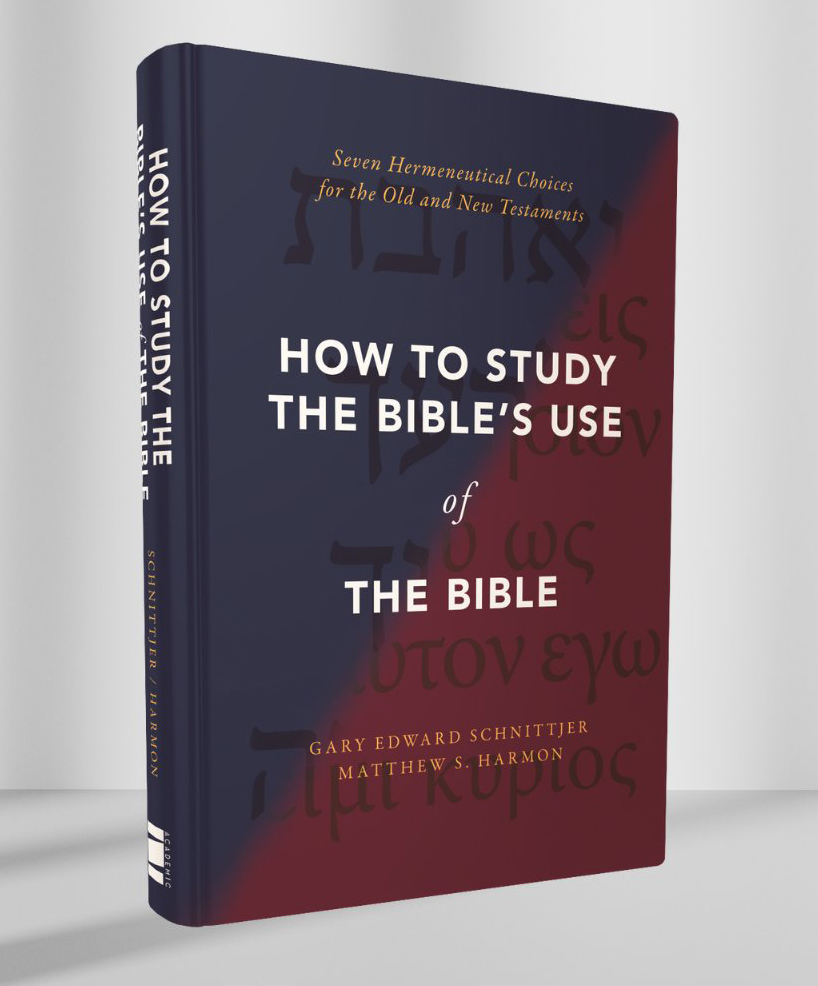How to Study the Bible’s Use of the Bible is the latest addition to the Cairn University faculty library. Dr. Gary Edward Schnittjer, distinguished professor of Old Testament, and his co-author, Matthew S. Harmon, published the volume with Zondervan Academic.
While scholarship up until this point has largely focused on the New Testament Use of Old Testament or (far less commonly) the Old Testament’s use of itself, this book’s study of “the Bible’s use of the Bible” brings these two areas together. This shows how redemption is revealed across both testaments. How to Study the Bible’s Use of the Bible is a volume designed for pastors and scholars who are routinely faced with hermeneutical decisions regarding Scripture’s reference and interpretation of earlier passages.
Who Is The Primary Audience for this Book?
Published under Zondervan’s Academic imprint, this book is directed toward those involved in the serious academic study of Scripture. As mentioned in Carmen Joy Imes’ endorsement of the book, “The book will benefit advanced students who are ready to build on the basic foundation of their Hermeneutics 101 as well as career scholars who want to keep growing.”
What Can Readers Expect?
Schnittjer and Harmon provide students with a clear approach to handling the Bible’s use of itself through seven key hermeneutical choices organized into individual chapters:
- Sequestered Versus Connected
- Adjusting Meaning and/or Adjusting Context Versus Advancement of Revelation
- Detecting Allusions Versus Science
- Horizontal Context Versus Vertical Context
- Biblical Versus Extrabiblical Relationships
- Backward-Looking Versus Forward-Looking Typological Patterns
- Historical Exegesis Versus Historical and Prosopological Exegesis
After explaining the hermeneutical choice, each chapter is packed with several examples from the Old and New Testaments for interpretation. As noted by the publisher, “The plentiful examples model for students the need to ground hermeneutics in biblical evidence and provide insight into understanding why the Bible’s use of the Bible is important.” Case studies of the Bible’s use of the Bible are also included at the end of the book.
What Have Others Said About the Book Already?
“This is an instructional book to teach students how to interpret the use of the OT in the OT and the use of the OT in the NT. This itself is an advantage, since most books on this general subject deal with the NT use of the OT. The two need to be put together, since the NT’s use of the OT is based on hermeneutical patterns of the OT’s use of the OT. Therefore, the latter enlightens the former.”
—G.K. Beale, professor of New Testament, Reformed Theological Seminary, Dallas, Texas
“This incisive study directs any student of the Bible to hone and fine-tune their methodology when considering the relationship between the Old and New Testaments. Schnittjer and Harmon call for a connected approach that pays as much attention to the Old Testament’s use of itself as it does to the New Testament’s use of its existing scripture.”
—Katharine Dell, professor of Old Testament literature and theology, University of Cambridge
“‘Scripture interprets Scripture’ is an age-old Protestant hermeneutical rule of thumb; the NT use of the OT is a newer, and burgeoning, academic field. Schnittjer and Harmon argue compellingly that undergirding both notions is inner-biblical exegesis, specifically, the OT use of the OT, a relatively neglected topic. They also present a strong case for viewing the OT use of earlier Scripture as a primary resource for the NT use of the OT—and for Jesus’s own biblical interpretation”
—Kevin J. Vanhoozer, research professor of systematic theology, Trinity Evangelical Divinity School
Where Can This Book Be Purchased?
This book is available for purchase from Zondervan Academic in addition to several major retailers, including Amazon and christianbook.com. A series of video lectures from the authors is also available through Master Lectures. You can watch the first video session for free here.




